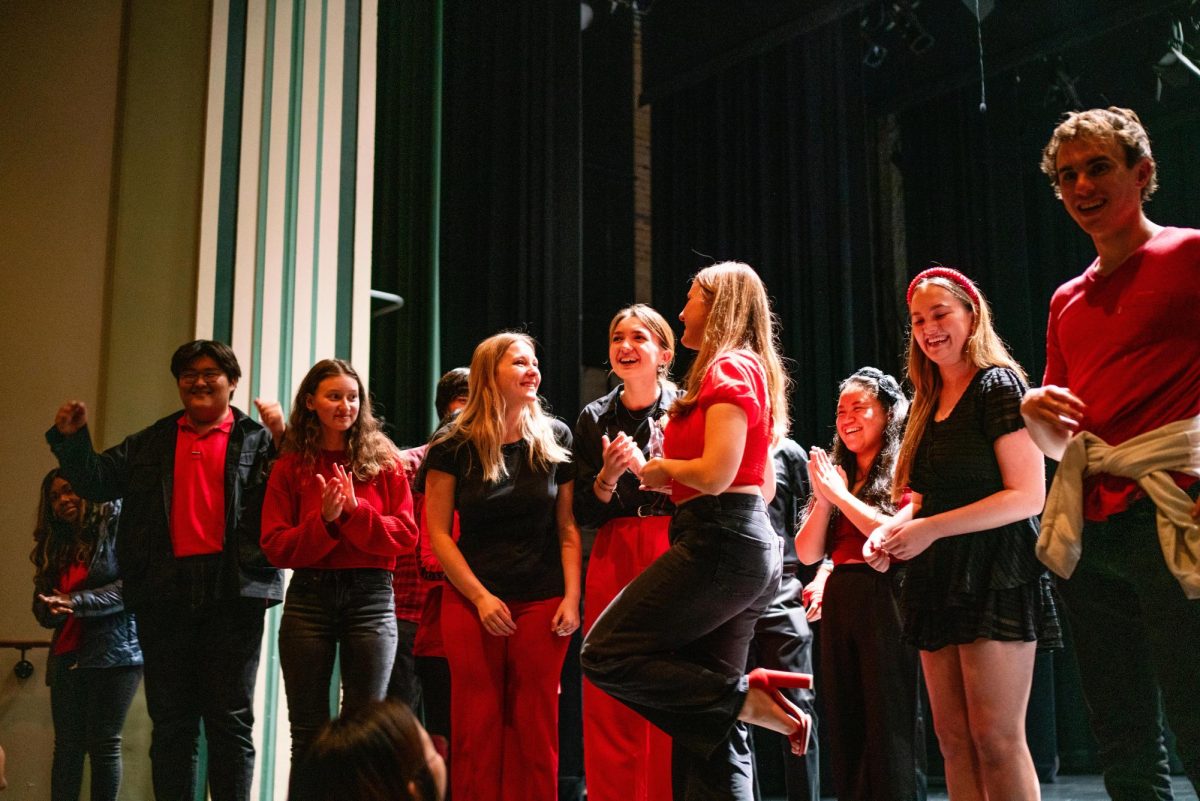“Do you feel like a sardine in a can?” The ad plays from the speakers, promoting the Champaign-Urbana MTD marketing campaign that advises students to leave 10-15 minutes earlier to avoid congested buses. The driver runs a hand over his face and mumbles about the traffic. “Thank you for riding MTD!”
It’s the beginning of the second rush of the day, 3:30 p.m. The 22 Illini is relatively calm for now, but soon it will be swarmed with more students than seats and will have arguably less room than a sardine can.
As the University saw record enrollment this year, MTD has seen increases in ridership as well, said Jan Kijowski, MTD marketing director.
Keeping to schedule has become a problem for some buses, she said.
“That’s been a challenge … because the more often we stop and the more number of riders that board at stops slow down the routes,” Kijowski said.
Get The Daily Illini in your inbox!
Every day, each MTD bus sees an average of 57,000 rides, but this can vary month-to-month. Kijowski said the average peaks in October and February.
But for five days with considerably good weather early in September, each bus had an average of 60,000 rides. She said MTD officials are worried some days, buses may see more than 64,000 passengers when bad weather begins to set in.
Kijowski said September has become the third-highest month ever for MTD ridership, with more than 1.3 million rides in total. While buses are not constantly carrying heavy loads, key times of the day, such as 7 to 9 a.m., 3:30 to 5:30 p.m. and ten minutes before the hour on weekdays prove to be quite hectic.
“We can see down to the stop level how many people are getting on and off the buses,” Kijowski said. “In our control center, the staff can see in real-time how buses are performing on their routes.”
Standby buses are at the ready in case buses fall too far behind schedule, Kijowski said, noting MTD’s recent marketing campaign that encourages students who live at busy areas, such as Ikenberry Commons, the One North apartments on North Lincoln Avenue and Pennsylvania Avnue Residence halls, to board earlier buses.
“Generally speaking, it works out to be about 70 percent of our ridership is University of Illinois generated, and that includes students, faculty and staff,” Kijowski said.
She said 102 buses are currently in the MTD system, and the addition of older buses is a possibility, although major change would not occur until August 2014. MTD is in its second year of a three-year contract, and no immediate changes are planned.
While routing changes may seem imminent, budget complications may prevent immediate revisions as the hiring of new drivers is brought into question — more buses, more drivers.
Kijowski said the board has not suggested raising the semester-based student fare that allows students unlimited rides, although it may be an option to consider because campus ridership is the cause for the change.
As a result of the spring 2012 referenda, students agreed to pay $52 per semester for the 2012-13 academic year, $54 for the 2013-14 academic year and $59 for the 2014-15 academic year, Kijowski said in an email. She noted that MTD was able to add a fourth SafeRides van on Thursday, Friday and Saturday nights thanks to the increased fee, as well as offer some SafeRides service during Thanksgiving, winter and spring breaks.
Additionally, Kijowski said more students may be taking the bus because fewer are bringing their cars to campus.
Dorsey Moore, of Champaign Auto Repair, said he has seen a declining number of students coming in for car repair.
“We haven’t seen as many repairs coming in from students than we did last year and the year before,” he said. “Last year we’d probably get three or four a week compared to this one, where we’re getting maybe one a week, if that.”
In 2009, the annual MTD bus pass fee was lowered from $235 to $60, Kijowski said. She added that the country is seeing the tail end of the recession. As a result, parents may not be sending their children to campus with cars for reasons including tuition increases and the recession’s pressures.
“I don’t think anyone knows with complete certainty exactly what is the biggest factor, but it’s a combination of all of those things,” Kijowski said.
While some students take the bus, some avoid it altogether.
“(It’s) less convenient than walking,” said Marty Schatz, a freshman in DGS. “I don’t have a car because it’s also less convenient and Bromley is close enough to walk to everything, so I just walk.”
Brittney can be reached [email protected].








